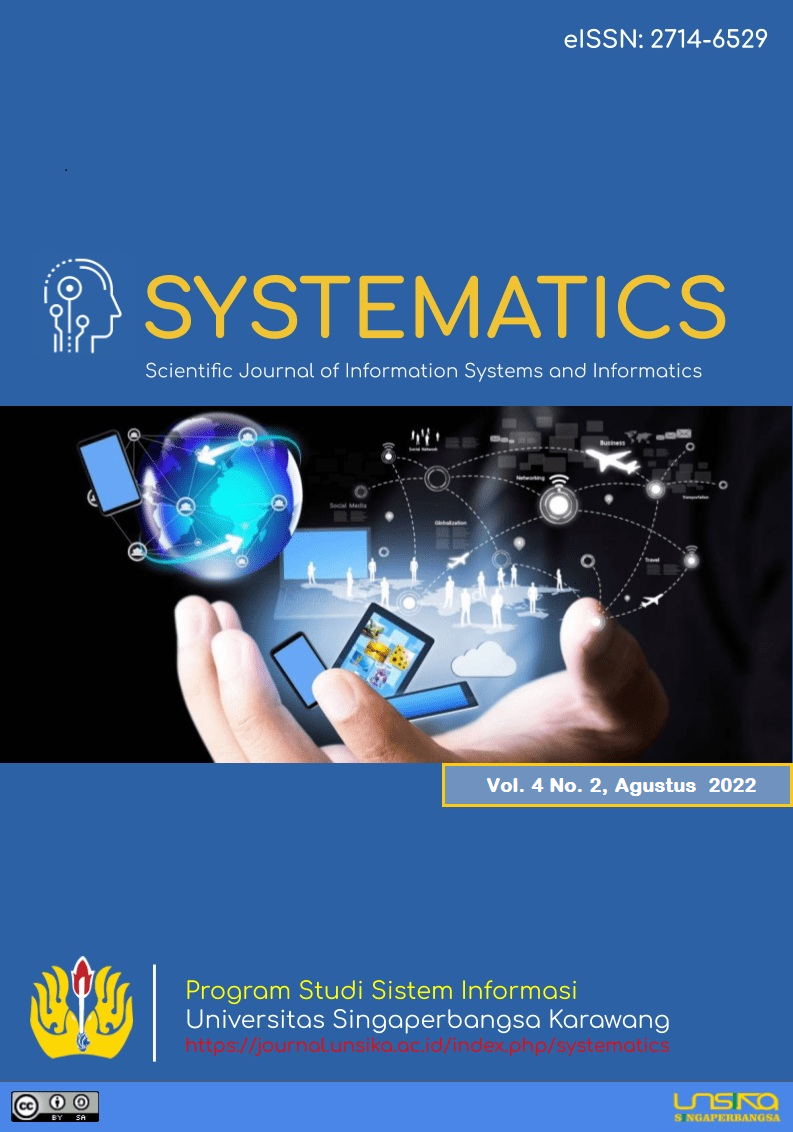UI/UX Design Web-Based Online Course as a Place for Hard Skill Improvement
Kursus Online Berbasis Web Desain UI/UX sebagai Tempat Peningkatan Keterampilan Keras
DOI:
https://doi.org/10.35706/sys.v4i2.6363Abstract
With intense job competition, skills are needed that can give them an advantage over other candidates. Skills greatly affect what kind of work you want. When choosing a job, the important thing to have is hard skills. Hard skills can be learned by anyone. One of the places to improve hard skills is by using an online course platform. Currently, there are lots of online courses to improve skills, but many users are still confused about choosing the right course. The category of courses that are only divided according to academic knowledge and the absence of difficulty levels in the courses also make users confused about choosing a course. Therefore, from this problem an idea and solution was made in the form of an online course prototype called Skilverse. In this research, the method used is a Design Thinking approach which has 5 stages, namely empathize, define, ideate, prototype, and test. The prototype that has been made is also tested on respondents to validate whether the solution that has been made can solve user problems. The test method uses SEQ, namely by giving a task to the respondent by giving a Likert scale from 1 to 7.
Downloads
References
. N. M. Widiastini, M. A. Prayudi, G. Wirata, N. Dini Andiani, and N. L. Agustini Karta, “Peluang Kerja Perempuan Lulusan sekolah menengah Kejuruan Perhotelan di Bali,” Jurnal Kajian Bali (Journal of Bali Studies), vol. 9, no. 2, p. 289, 2019.
. M. Zamroni, “PERKEMBANGAN TEKNOLOGI KOMUNIKASIDAN DAMPAKNYA TERHADAP KEHIDUPAN,” Jurnal Dakwah, vol. X, no. 2, pp. 195–211, Jul. 2009.
. I. M. A. Winangun, “PERSPEKTIF MAHASISWA TERHADAP PENGELOLAAN PEMBELAJARAN ONLINE DIMASA PANDEMI COVID-19,” Widyalaya:Jurnal Ilmu Pendidikan, vol. 1, no. 1, pp. 19–27, Jul. 2020.
. H. Henderi, M. Maimunah, and R. Andrian, “Desain aplikasi e-learning Sebagai Media Pembelajaran Artificial Informatics,” CCIT Journal, vol. 4, no. 3, pp. 316–330, May 2011.
. A. A. Razi, I. R. Mutiaz, and P. Setiawan, “Penerapan metode design thinking Pada model perancangan UI/UX APLIKASI Penanganan Laporan kehilangan Dan Temuan barang tercecer,” Desain Komunikasi Visual, Manajemen Desain dan Periklanan (Demandia), vol. 3, no. 02, p. 219, Aug. 2018.
. W. S. Nasution and P. Nusa, “UI/UX design web-based learning application using design thinking method,” ARRUS Journal of Engineering and Technology, vol. 1, no. 1, pp. 18–27, 2021.
. A. C. Widodo and E. G. Wahyuni, “Penerapan Metode Pendekatan Design Thinking dalam Rancangan Ide Bisnis Kalografi,” AUTOMATA, vol. 2, no. 2, 2021.
. “PERANCANGAN UI/UX APLIKASI CERDAS SEPUTAR CORONA (CERNA) DENGAN METODE DESIGN THINKING,” Computatio: Journal of Computer Science and Information Systems, vol. 5, no. 2, pp. 52–60.
. “Perancangan UI/UX menggunakan pendekatan HCD (Human-Centered design) pada website Thriftdoor,” AUTOMATA, vol. 1, no. 2.
. J. Sauro and J. R. Lewis, Quantifying the user experience: Practical statistics for user research. Amsterdam: Morgan Kaufmann, 2016.
Downloads
Published
How to Cite
Issue
Section
License
Copyright (c) 2022 SYSTEMATICS

This work is licensed under a Creative Commons Attribution-ShareAlike 4.0 International License.
Authors who publish with this journal agree to the following terms:
- Authors retain copyright and grant the journal right of first publication with the work simultaneously licensed under a Creative Commons Attribution-ShareAlike 4.0 International License. that allows others to share the work with an acknowledgement of the work's authorship and initial publication in this journal.
- Authors are able to enter into separate, additional contractual arrangements for the non-exclusive distribution of the journal's published version of the work (e.g., post it to an institutional repository or publish it in a book), with an acknowledgement of its initial publication in this journal.
- Authors are permitted and encouraged to post their work online (e.g., in institutional repositories or on their website) prior to and during the submission process, as it can lead to productive exchanges, as well as earlier and greater citation of published work (See The Effect of Open Access).







